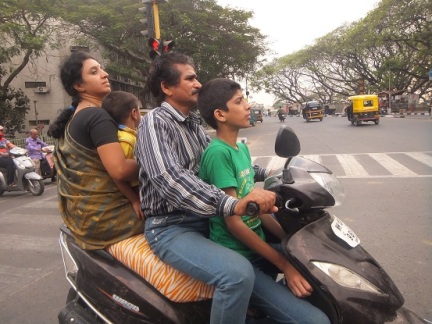
Snug Fit!
We had scariest ever rickshaw ride today en route to the Incense shop in Phadke Haud. Over the weeks we’ve been here we’ve hardened ourselves to the twists and turns of an average rickshaw ride – but this was something else. First off he careened out onto the wrong side of the dual carriageway – and not apologetically like a man doing a crazy thing and hoping to get away with it – but utterly brazenly going head on into the traffic, as if daring them not to get out of his way. Then he suddenly took a diagonal sweep and cut straight across the other carriageway, horns blaring my eyes squeezed tightly shut and the literal realisation of a white knuckle ride. We were so

glad to get out without a serious bash, we scarcely minded that he charged us three times the correct rate (“It’s a holiday today Maam”) or the fact that we were not actually at our intended destination. He dropped us somewhere on the Ravi Pewar Road in a district of Pune I’ve never seen much of before. Here you got a real sense of the history of the place – narrow streets and characterful buildings that have stood for centuries. Here even more so than elsewhere in Pune you can see many of the old trades completely unchanged by modernisation.
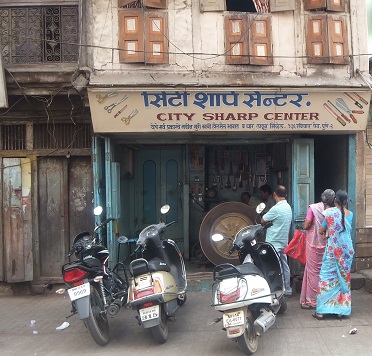
Huge sharpening wheel.
Walking through the door of the incense shop is like taking a step back in time – it’s reminiscent of an old fashioned apothecary. Wooden glass fronted cabinets stuffed full of glass decanters of all shapes, sizes and colours. We had a fine old time sniffing them all and selecting a few favourites as gifts. Once you’ve chosen they are meticulously decanted into tiny glass bottles, each with it’s own drawstring bag, prices starting at 30 rupees (about 30 pence) for the smallest size going up to about 400 rupees for the more valuable oils. The building has been there since 1872 and Jenny joked so had the wooden cabinets – completely straight faced the owner (6th generation) assured her that the cabinets were much newer from sometime in the 1900’s.
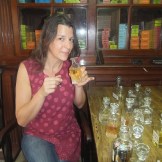
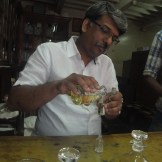
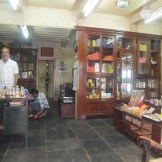
This evening’s class was pranayama with Rajalaxmi. As I came into the practice hall the medical class was just finishing and Raya came over to ask how I was, it was nice to be remembered as of course every month, every year, so many new faces. We began the class with a long stay in swastikasana preparing for the invocation. She said that when we are instructed to move the sacrum and tailbone into the body it is an energetic change – the energy is pushed forward to the front of the body so that we can find the space there. Once we were well lifted she gave the instruction to move the top abdomen downward away from the bottom rib – this had an immediate stilling and quietening effect as the diaphragm lost its projecting hardness. Clearly her instructions worked well because there was audible difference in the quality of the invocation. Sometimes here at RIMYI the chanting sounds a lot like a welsh choir belting out passionate hymn, but this evening it had a completely different quality – smooth, harmonious, low. We moved into a long prone savasana – with the body in such a passive state we could allow the breath to ‘seep in’ as we witnessed, rather than actively pulling the breath in. We then sat for anta and baya kumbhak – retention of both the inhalation and exhalation. We finished in supta swastikasana, feet raised on the bolster – we were told that in the abdominal navel region there is an energetic transaction – how much you could soften the abdomen determines what energetic transaction can take place there.
Home for some restorative inversions and we decided to book a night at the Ambrosia resort tomorrow, to make the most of our day off on Sunday.
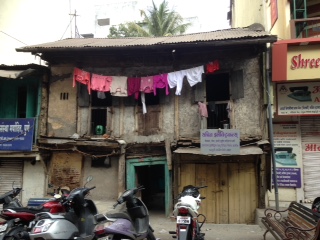
19th February – Rajalaxmi
Swastikasana – when we tell you to move the sacrum / tailbone into you it is an energetic movement – when you press in there it causes the energy to move forwards to the front body so that you can create the lift and space there. Extending upward, release the top abdomen downward away from the bottom rib – this brings the quietness and prevents the hardening of diaphragm – don’t always be pushing your front body towards the teacher.
Prone Savasana – Thick tri fold blanket for forehead, forehead skin always releasing towards the nose. Pubic plate towards the navel. Bolster between the back thighs, encouraging and supporting your back thighs to roll from inside out, so there is a spreading of the body. Here the body is passive so the breath can flow naturally – you have to allow the breath to seep in as you witness it rather than pull in the breath.
Seated anta baya kumbhak – first witnessing the start of inhalation end of inhalation WAIT – witnessing the start of exhalation and end of exhalation WAIT for the inhalation to come on its own – it is an instinct.
Supta swastikasana – in the abdomen, navel region there is an energetic transaction. How much you can soften there determines what energetic transaction can take place there. Viloma baya exhalations.

Comments